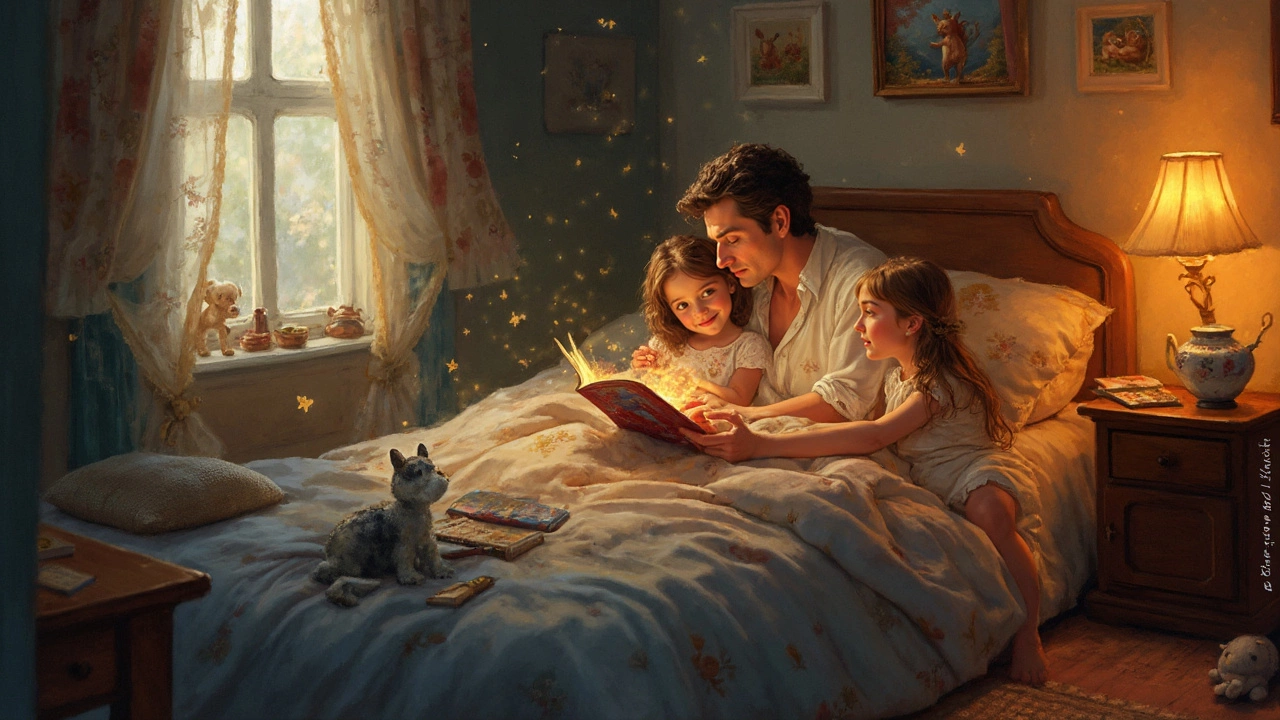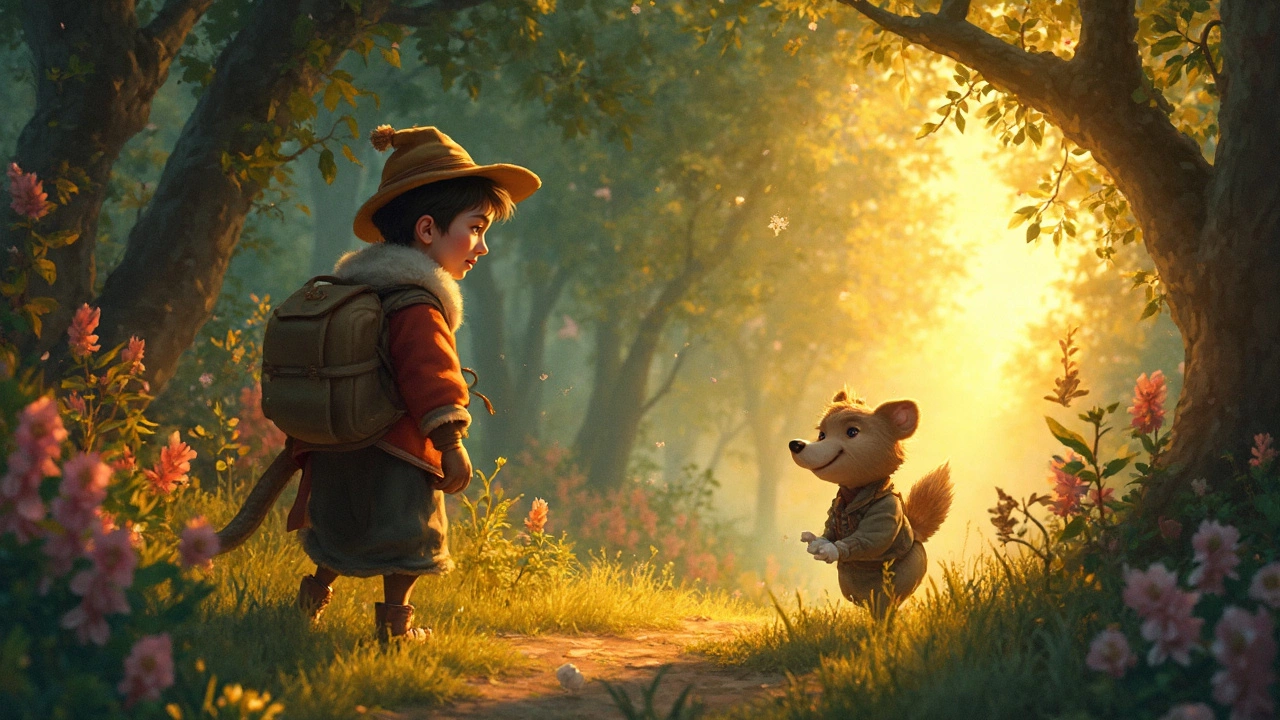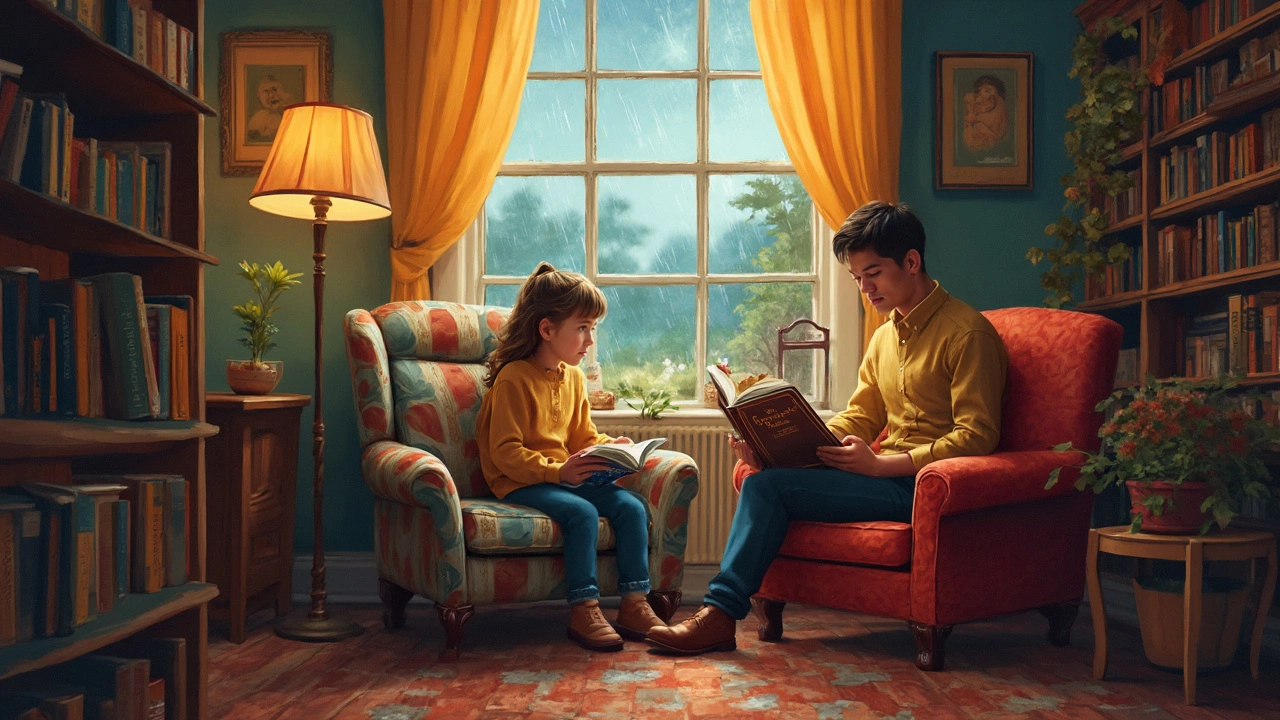Top 10 Bestselling Children's Books Engaging Young Minds
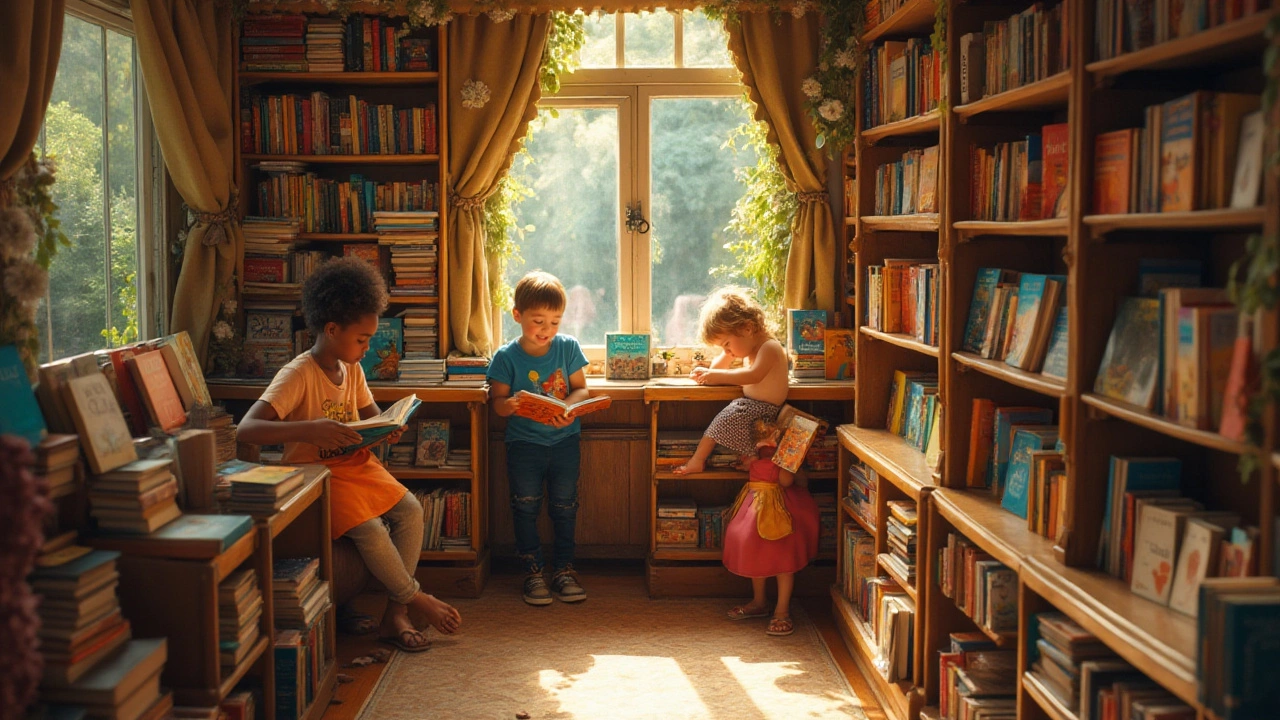
Diving into a world where fantastical creatures roam and heroes embark on daring adventures can spark a lifelong love of reading. Children's literature does exactly this, capturing hearts with stories that resonate across generations. From spell-casting wizards to real-world adventures, find out which stories have held a special place on little bookshelves, becoming the highest sellers in the genre.
In the pages that follow, we'll take a look at ten refreshing, innovative, and time-honored titles that offer more than just a good read. They provide the building blocks for creativity, empathy, and understanding in a young reader's life. Whether you're gifting a book or expanding a child's personal library, these options come highly recommended and cherished around the globe.
Choosing a children's book requires understanding the threads that make them so compelling. We'll explore what these popular books have in common, discuss the accolades they've received, and offer helpful hints on selecting the right ones for different reading stages. Together, let's embark on a literary journey that ignites imaginations and weaves lifelong memories.
- The Magic of Timeless Classics
- Modern Sensations in Children's Literature
- Literary Awards and Recognition
- Picking the Perfect Book for Young Minds
The Magic of Timeless Classics
There is a reason why certain children's books never go out of style, captivating generation after generation. These timeless classics have established themselves as essential reading for young minds. One can't mention timeless children's literature without acknowledging C.S. Lewis's "The Lion, the Witch and the Wardrobe." This enchanting tale whisks readers away to Narnia, a land filled with mythical creatures and brave adventures. Readers not only get lost in the story but also learn valuable life lessons about courage and friendship.
Another classic, beloved worldwide, is Antoine de Saint-Exupéry's "The Little Prince," which is often celebrated for its profound simplicity in addressing complex themes, such as love and loneliness. Through a child's eyes, readers grasp the importance of seeing beyond the superficial. "Where the Wild Things Are" by Maurice Sendak is yet another masterpiece that looks into a child's imagination and emotions, offering therapeutic value in helping young readers deal with their feelings of anger and reconciliation.
"A children's story that can only be enjoyed by children is not a good children's story in the slightest." – C. S. Lewis
The enduring appeal of these books often lies in their universal themes. Despite being rooted in a specific cultural or temporal context, these tales transcend those boundaries touching on humanity broadly. They provide insight into the minds and experiences of children from various eras. As a result, parents and grandparents find equal joy in revisiting these stories, sharing a legacy with the next generation.
Many of these enduring tales have even seen adaptations in other media, from movies to stage productions, continually reaching new audiences. These adaptations underscore the stories' significance and cultural impact. Yet, there's something uniquely magical about flipping through a well-loved page, reading the words the way they were initially intended. These beloved books, with their intricate illustrations and captivating prose, cultivate an unwavering bond between parent, child, and text.
Given their time-tested success, these classics offer no shortage of merit. They often top the list when educators and parents consider literature crucial to childhood development. Their robust narratives and rich characters provide the breadth and depth necessary for enriching young minds. These stories not only entertain but also educate, coalescing with values that form the bedrock of ethical behaviors.
In fostering a child's love for reading through timeless classics, you invest in more than just a pastime. You're encouraging an appreciation for artistry and an understanding of diverse perspectives. The vibrant tapestry of words and images these books offer serves as a gateway into realms bound only by imagination, teaching children to dream, elaborate on a vision, and cultivate empathy.
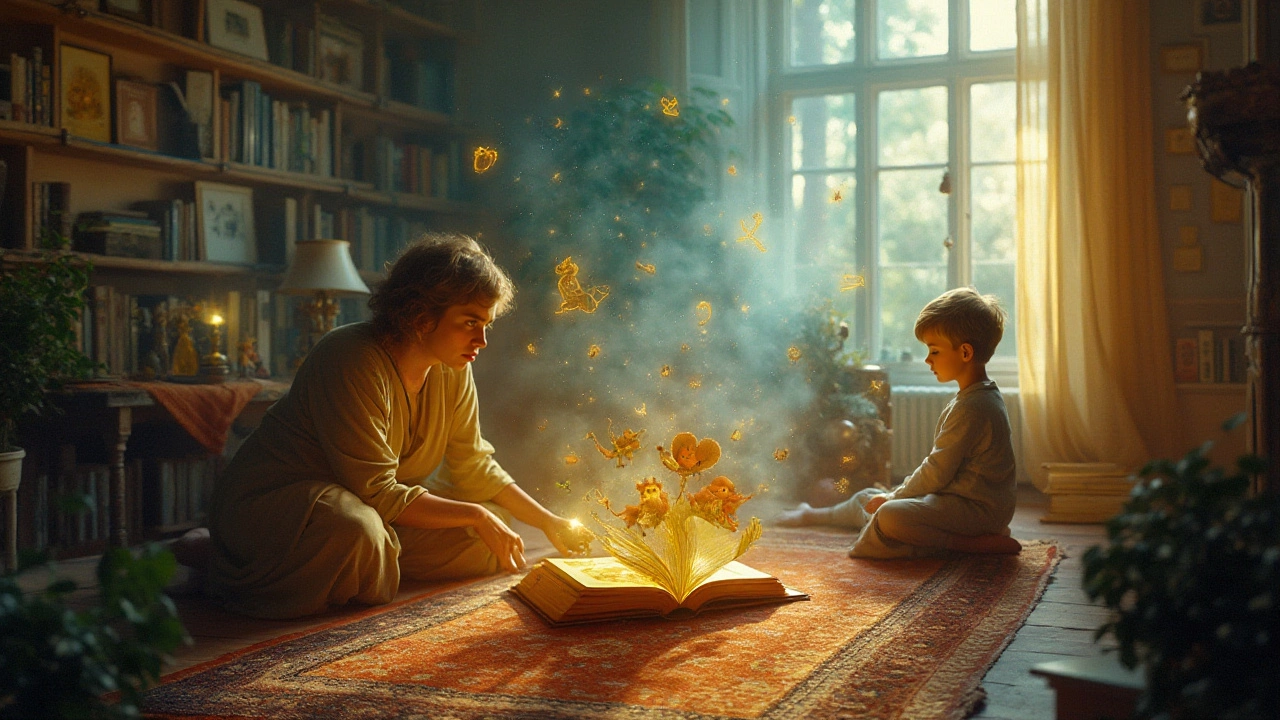
Modern Sensations in Children's Literature
Over the past decade, the landscape of children's books has evolved dramatically, welcoming a new era filled with diverse stories and innovative narratives. These modern sensations are nothing short of captivating, taking young readers by storm with their contemporary themes, inclusive characters, and vibrant illustrations. The rise in technology and social awareness has markedly impacted this genre, as writers and illustrators create works that reflect the colorful tapestry of today's world. Authors are crafting tales that not only entertain but also educate, reflecting issues like diversity, environmental conservation, and emotional intelligence. Take, for example, the 'Last Kids on Earth' series by Max Brallier, which combines humor with action-packed adventures, resonating with a generation raised amidst digital entertainment.
One of the standout features of these bestselling books is the way they seamlessly integrate untouched perspectives, bringing voices from traditionally underrepresented groups to the forefront. Books like "The Day You Begin" by Jacqueline Woodson and Rafael López explore themes of diversity and acceptance, delivering powerful messages wrapped in heartwarming narratives. This shift not only introduces children to the world's rich tapestry but also encourages empathy and understanding from a young age. There's a genuine demand for stories that mirror real-world diversity, where young readers can identify with characters that look, speak, or face challenges like they do. An increased emphasis on female lead characters is also evident, offering stories that inspire girls to confidence and independence—consider the popularity of the "Good Night Stories for Rebel Girls" series, which profiles impactful women throughout history.
In a world increasingly concerned with sustainability and environmental impact, modern children's literature has also embraced ecological themes. Books like "Greta and the Giants," inspired by young environmental activist Greta Thunberg, introduce readers to practical ideas about conservation and the importance of eco-friendly practices. Illustrated boldly and accurately, these stories deliver essential messages about the environment's fragility and the role young readers can play in nurturing the planet. According to a survey by Scholastic, 70% of children aged 6-17 said that they wanted to read books with environmental themes, indicating a growing curiosity and responsibility towards these important topics.
The power of storytelling has always been its ability to transform hearts and minds, and there is no age limit to its impact," noted author and educator Susan Perrow in a recent interview. "The resurgence of contemporary storytelling in children's literature is giving young readers the autonomy to understand and relate to the world around them more profoundly."
Moreover, the integration of technology into reading experiences has given rise to interactive books and augmented reality versions of traditional tales, allowing children to participate in the stories actively. Characters leap off the pages, and plotlines evolve with the prompts given by their readers. Popular books like "Choose Your Own Adventure" have been reimagined for the digital age, setting a trend that turns reading into an unforgettable experience. The creativity within this sphere knows no bounds, as authors and publishers push the envelope to embrace the future while honoring the timeless charm of storytelling.
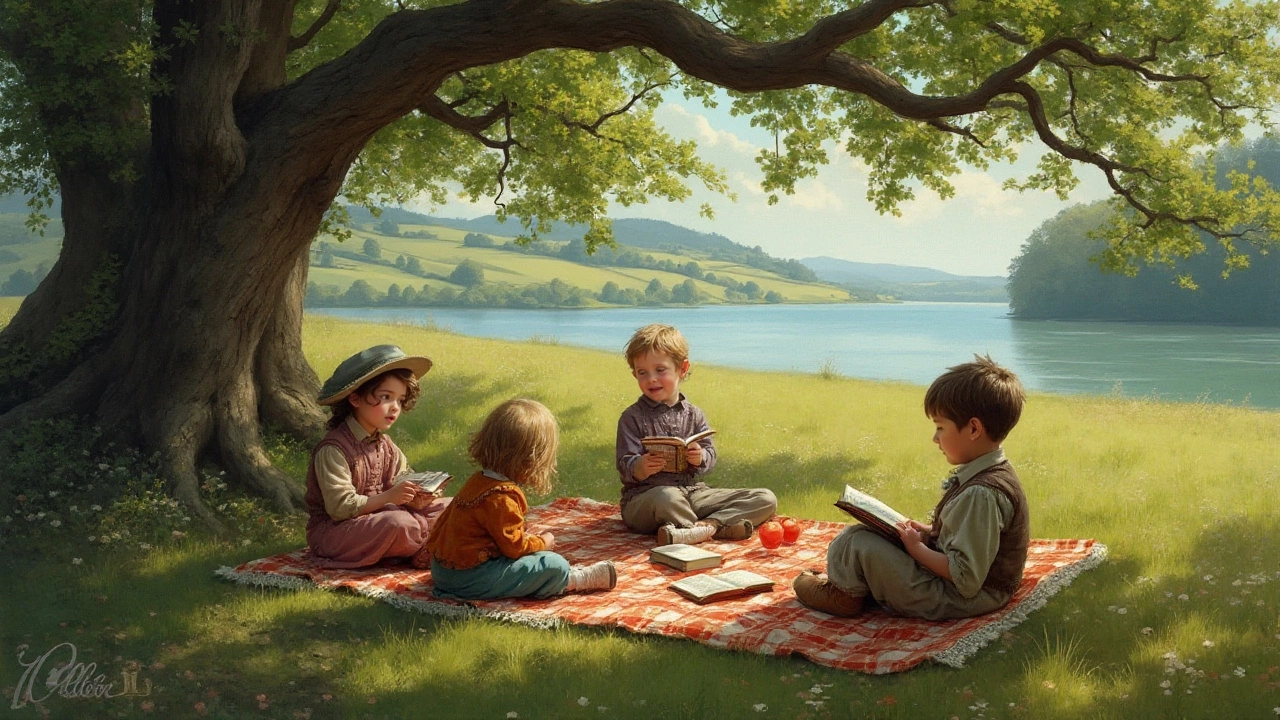
Literary Awards and Recognition
The enchanting realm of children's books is not just about whimsical tales but also about the accolades that such works garner for their literary excellence. When a children's book receives an award, it marks a seal of quality and a promise of enriching content for young readers. Recognizing excellence is the world-renowned Newbery Medal, awarded annually by the Association for Library Service to Children. Since its inception in 1922, this prestigious medal has highlighted authors whose writing brings a unique blend of storytelling and learning to young audiences. Such recognition often propels a book into timeless stature, encouraging even the most reluctant readers to explore these celebrated stories.
Another cherished distinction in the world of kids' literature is the Caldecott Medal, which celebrates extraordinary illustrations in picture books. Named after the English illustrator Randolph Caldecott, this award emphasizes the visual story that accompanies the text, engaging young readers in a vivid and colorful universe. But awards aren't just limited to the English-speaking world; the Hans Christian Andersen Award is a global honor given by the International Board on Books for Young People, acknowledging a lasting contribution to children's literature on an international level. These accolades ensure a diverse range of talent and stories are promoted, nurturing a global community of young readers.
Impact of Awards on Children's Literature
The impact of literary awards stretches beyond mere recognition. They serve as critical guides for parents, educators, and libraries making choices for children's literature. Award-winning books often become staples in school curriculums and library reading lists across the globe. With each award cycle, a rich collection of stories becomes more visible, encouraging diversity of thought and culture in children's literature. Authors like J.K. Rowling and Maurice Sendak, previously propelled to fame through such awards, offer rich narratives that explore everything from childhood fears to flights of magical fancy, all winning over millions of small yet discerning readers.
As J.K. Rowling once shared, "The stories we love best do live in us forever." This sentiment echoes the timeless impact of a well-loved and well-awarded book.
Awards also inspire the creative community, shining a spotlight on burgeoning talent that might otherwise remain unnoticed. New authors, emboldened by the recognition of predecessors, dare to delve into new themes, creating a dynamic, evolving landscape of children's literature. For example, data amalgamated over years show that following the receipt of an award, book sales can increase by at least 40%, often introducing the book to international markets and translations, therefore increasing accessibility.
| Award | Impact on Sales |
|---|---|
| Newbery Medal | 40% increase |
| Caldecott Medal | 35% increase |
Indeed, while not the sole measure of quality, literary awards illuminate pathways for books that stir the heart and broaden the horizons of young minds. They reassure the guardians of young readers that these works are not only entertaining but also meaningful, carrying the potential to educate, inspire, and transform. In doing so, they ensure that literature continues to evolve, fostering a lifelong love of reading in the hearts of children worldwide.
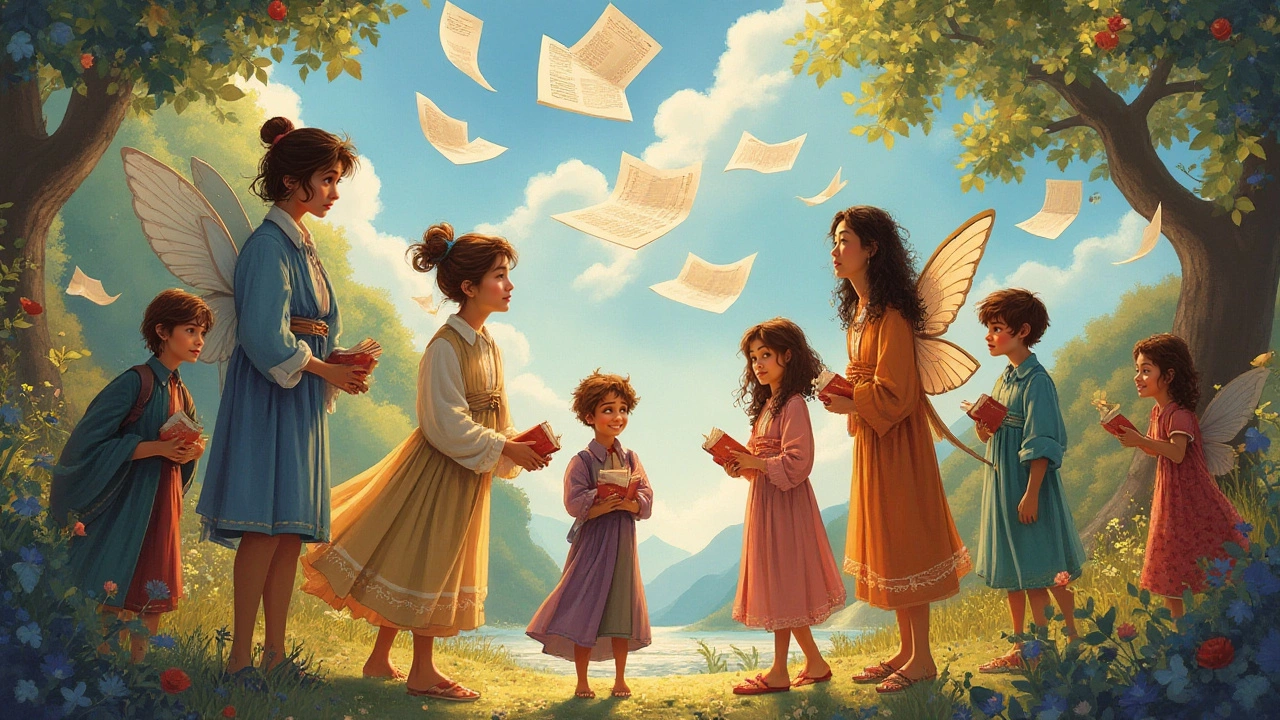
Picking the Perfect Book for Young Minds
Choosing the right book for a child can be a magical experience. It’s like handing them a key to worlds of wonder, creativity, and knowledge. Each children's book plays a crucial role in not just entertaining but also educating young readers, helping them navigate their emotions and learn about the world around them. The perfect pick depends largely on the child’s age, interests, and reading level. For younger children, vibrant illustrations and simple language are key; whereas for older kids, engaging plots and more complex characters become essential. It is also vital to ensure that the themes and morals resonate with the child and are appropriate for their stage of cognitive and emotional development.
A good starting point for picking a book is understanding the child's interests and hobbies. Does your little one love dinosaurs, fairy tales, or space adventures? The vast array of kids' literature encompasses all passions and curiosities, offering an entry point for even the most reluctant readers. Reflecting on classic tales like ‘Where the Wild Things Are’ by Maurice Sendak provides timeless learning opportunities. New-age tales coexisting with classic themes capture both contemporary reflections and perennial lessons. Also, consider books that introduce diversity in ideas and cultures to expose children to a broader worldview.
“A children's story that can only be enjoyed by children is not a good children's story in the slightest.” – C.S. Lewis
Incorporating a mix of genres—ranging from fiction to non-fiction, fantasy to educational—can also diversify a child's reading palette, ensuring they're always discovering something new. Books from the highest-selling lists often find popularity for good reason; they resonate with children across generations. These include works like J.K. Rowling's ‘Harry Potter’ series, where the blend of magic and real-world challenges proves deeply engaging. Evaluating these bestsellers can be a safe bet for a captivating read. Many respected libraries and bookstores curate annual lists of top picks which can be used as a guide. Further, aligning your selection with literary award winners can lead to rich, award-winning experiences.
In addition, consider factors such as the book's format—be it hardcopy or digital—and how that preference affects reading. While some children enjoy the tactile experience of turning pages, others might thrive with interactive e-books that add an element of engagement through technology. Collecting feedback from the child post-reading can also help fine-tune future selections, opening the door to deeper discussions about story elements they loved or could relate to as another layer of enjoyment. Here’s a quick tip: engage children by having them pick from a list of book covers—the visuals often speak volumes about what excites them.
Finally, parents and educators can foster reading habits by setting dedicated reading times, creating comfortable reading nooks, and modeling reading behaviors. A supportive environment where popular books are both accessible and encouraged enables children to perceive reading as a rewarding part of their routine rather than just an obligatory activity. By choosing the perfect book, you’re not just picking a story; you’re nurturing a lifelong curiosity for learning and discovery.
